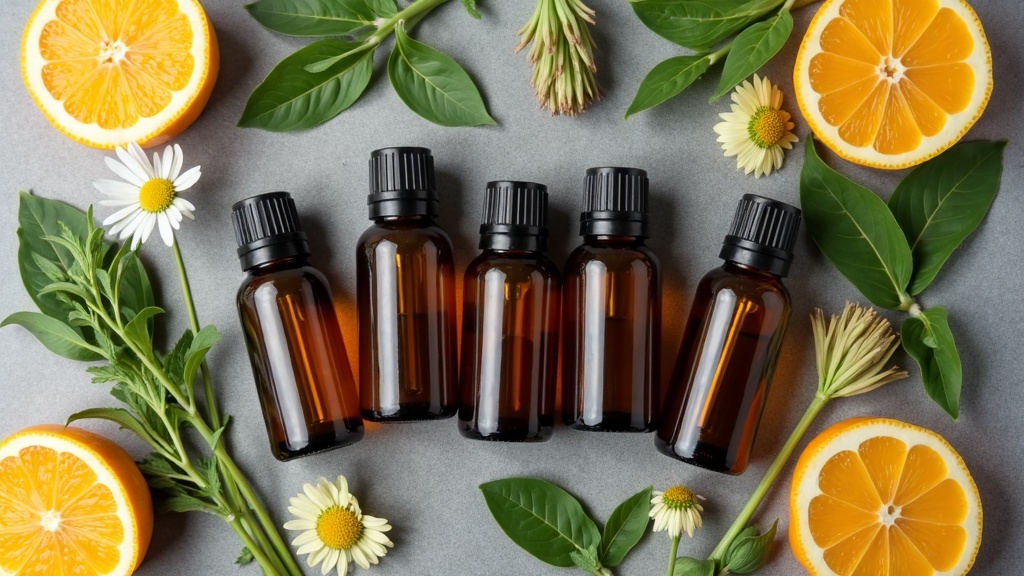Getting started with essential oils can feel inspiring, but I know it’s easy to get lost with so many options and uses out there. I remember when I picked up my first set, I wanted straightforward oils that fit into simple routines for wellness, relaxation, and home cleaning. To make things easier for anyone stepping into this world, I’ve pulled together a list of the top 10 essential oils for beginners and some practical advice I wish I had from the start.

Why Start with Essential Oils?
Essential oils can add a lot to daily life. I use them when I want a natural scent in my home, need help winding down before bed, or want to add a little boost to cleaning routines. These oils are concentrated plant extracts, so a little bit goes a long way. For beginners, they offer a simple way to check out wellness and self-care. Choosing the right oils at first makes it easier to try different uses without getting overwhelmed. As you get used to the basics, experimenting with new oils can also keep things fun and help you figure out which scents and benefits work best for you.
The essential oil market has grown a lot, becoming more available for home use. When I first began, I found it helpful to focus on single oils before experimenting with blends or advanced uses. This approach made it easy to spot what each oil could do on its own and built my confidence by giving quick wins. The more you get a feel for individual oils, the easier it becomes to mix in some variety later on.
What Are the Best Essential Oils to Start With?
I recommend starting out with a few key oils that offer different benefits and are useful on their own. Here’s a list of the top 10 essential oils for beginners. These are always at the front of my collection because they’re easy to use and have clear benefits:
- Lavender: Great for relaxation, sleep, and minor skin issues. I often put a few drops on my pillow or in my bath.
- Peppermint: Invigorates and soothes. I use peppermint for headaches and to freshen the air.
- Lemon: Energizing and cleansing. Lemon is my go-to for adding a fresh scent to cleaning sprays.
- Tea Tree (Melaleuca): Known for its purifying properties. I reach for tea tree oil to help with blemishes and as part of a natural cleaning mix.
- Eucalyptus: Helps with breathing and is commonly used when I feel congested.
- Frankincense: Supports relaxation and skin health. Frankincense adds depth to blends and is easy to add to skincare routines.
- Sweet Orange: Uplifting and warm. I use orange oil for its cheerful scent in diffusers.
- Rosemary: Helps focus and supports hair care. I add a drop to my shampoo or use it when I’m working at my desk.
- Chamomile (Roman or German): Calming for sleep and skin. I choose chamomile for gentle bedtime blends.
- Geranium: Balancing for mood and skin. This floral oil works well in homemade lotions.
These are the oils I keep within reach because they each serve a clear purpose. If you’re new to essential oils, focusing on these 10 gives a broad range of aromas and uses, from relaxation and focus to home cleaning. Once you’re comfortable with these, you may want to check out other single oils or try premade blends as you grow your collection.
The 20 30 50 Rule for Essential Oils
The 20 30 50 rule is a safety guideline I keep in mind when blending oils for personal use, especially topical applications or diffusing. It suggests keeping a blend composed of 20% top notes, 30% middle notes, and 50% base notes. This helps create balanced aromas and avoids harshness from using too much of a strong oil. For example, if making a blend with 10 total drops, 2 drops would be a top note (like lemon), 3 would be a middle note (like lavender), and 5 would be a base note (like frankincense).
This rule also helps with safety, since essential oils are highly concentrated. Watching ratios keeps blends skin-friendly and effective. If you’re unsure, a trusted essential oil dilution chart or guidance from reputable brands is helpful. There are websites and apps available that let you check correct ratios for different needs, adding a layer of confidence when exploring your first blends.
Quick Tips for Choosing and Using Essential Oils
When I started, understanding how to safely pick and use oils helped me avoid frustration and get results faster. Here are some simple tips for beginners:
- Always Dilute: Essential oils are potent. I always mix them with a carrier oil (coconut, almond, or jojoba) before applying to skin.
- Patch Test Before Applying: I try a small amount on my inner forearm and wait a few hours to check for a reaction.
- Use Diffusers Carefully: A few drops go a long way. Overuse can cause headaches or sensitivity.
- Check Sourcing: I look for brands that are transparent about where and how the oils are made. Pure, GC/MS-tested oils are my preference. Learn more about quality checks from sources like the National Association for Holistic Aromatherapy.
- Keep Oils Out of Reach of Children and Pets: Some oils are toxic for pets or not safe for young kids.
- Store Properly: I keep mine in a cool, dark spot to prevent oxidation.
Another tip is to track each oil’s shelf life by marking purchase dates. This helps you use oils at their freshest and avoid losing potency over time. Remember, using properly stored oils gives better scent and therapeutic results.
Top 10 Best Essential Oils: What Makes Them Popular?
The top 10 list includes popular oils for a reason. They’re easy to blend, versatile, and offer noticeable results. Here’s a quick breakdown of what I love about each and some ideas to try right away:
- Lavender: Try a drop on a cotton ball by your bedside or mixed into unscented lotion.
- Peppermint: Place a drop in your palm, cup hands over your nose, and breathe deeply for a midday pick-me-up.
- Lemon: Add to a homemade surface spray for a bright, clean scent.
- Tea Tree: Mix into a carrier oil and dab on blemishes or add to a foot soak.
- Eucalyptus: Use a few drops in a bowl of steaming water, cover your head with a towel, and breathe gently to help clear sinuses.
- Frankincense: Blend with moisturizer for extra calming care, or use a drop in meditation.
- Sweet Orange: Diffuse in the kitchen to energize your morning or mix with clove for a cozy scent.
- Rosemary: Add to shampoo for scalp care or diffuse while studying.
- Chamomile: Use in bedtime diffuser blends or add to bathwater for gentle skin soothing.
- Geranium: Try blending with coconut oil for a flowery body moisturizer.
These are easy to incorporate into daily routines. For a deeper look, the AromaWeb Beginner’s Guide outlines more about why each is considered beginner-friendly. Even if you only use a few oils at first, simple blends can have a big impact.
Frankincense: The King of Essential Oils
Among all essential oils, frankincense often gets called the “king” because of its long history, versatility, and reputation for promoting wellness. I use frankincense for everything from meditation and relaxation to skincare. It blends easily with many other oils and gives a grounding effect that makes it great for stressful days or evening wind-down routines. Its gentle aroma and rich therapeutic profile explain why it’s earned a top spot among essential oils, both historically and today. You might stumble upon new uses for it as you gain experience, such as adding to facial serums or homemade balms.
Practical Challenges When Starting with Essential Oils
The hardest part of using essential oils in the beginning is understanding dilution, scent preferences, and safe use. There are a few bumps that popped up for me:
- Overuse: When I first started, I put too many drops in my diffuser and found the smell overwhelming. Starting slow makes it easier to enjoy the benefits without side effects.
- Inconsistent Quality: Not all brands produce high-quality, pure oils. Double-checking reviews and looking for third-party testing helps weed out disappointing buys.
- Skin Sensitivities: I once applied peppermint oil to my skin without diluting and got a rash. Using a carrier oil prevents this kind of reaction.
Learning from these small mistakes helped me get the most out of essential oils safely. It’s a good idea to check online resources and join groups where people share their experiences. This makes it easier to avoid the same missteps and find fresh inspiration for new recipes.
More Ways to Try Essential Oils at Home
Once you’ve tried a few basic recipes, you might want to experiment more. I like making simple roller blends for stress, mixing oils into home cleaners, or adding a drop to laundry. Keeping a notebook of favorite blends and what works helps track reactions and results. Don’t be afraid to check out new carrier oils or add botanicals to your blends for added skin benefits or different scents.
- Room Sprays: Mix 10 drops of oil with 1/2 cup water in a spray bottle to freshen a room or use as a linen mist.
- Baths: Add 2-3 drops mixed with a tablespoon of carrier oil to bathwater for relaxation or muscle relief.
- Massage: Try a blend of your favorite oils with a carrier for a light, relaxing massage after a long day.
- Cleaning: Add lemon or eucalyptus oil to natural cleaning products to boost their scent and performance. This works great in kitchen and bathroom sprays.
- Skincare: Dab diluted tea tree oil on blemishes or add frankincense to everyday moisturizer for a subtle, earthy finish.
Jotting down successful combos or blends that didn’t work as well helps build a sense of confidence and makes it easy to recommend favorites to friends or family.
Frequently Asked Questions
What are the best essential oils to start with?
I suggest starting with lavender, peppermint, lemon, tea tree, and eucalyptus. They are easy to use and cover most needs from calming to cleaning.
What is the 20 30 50 rule for essential oils?
It’s a guideline for blending oils: 20% top notes, 30% middle notes, and 50% base notes. This creates scents that feel balanced and are often safer for skin application.
What are the top 10 best essential oils?
The top 10 for beginners are lavender, peppermint, lemon, tea tree, eucalyptus, frankincense, sweet orange, rosemary, chamomile, and geranium. They offer a wide range of uses for everyday needs.
What is the king of essential oils?
Frankincense is called the king of essential oils because of its broad uses, gentle character, and history in health and wellness routines.
Wrapping up, essential oils can be a simple and rewarding addition to your lifestyle. By starting with a handful of easy-to-use options, learning basic safety, and keeping an open mind to experiment, you’ll quickly find blends and routines that make a positive difference at home. Remember, every expert started as a beginner. Enjoy the ride as you explore all that essential oils have to offer!


